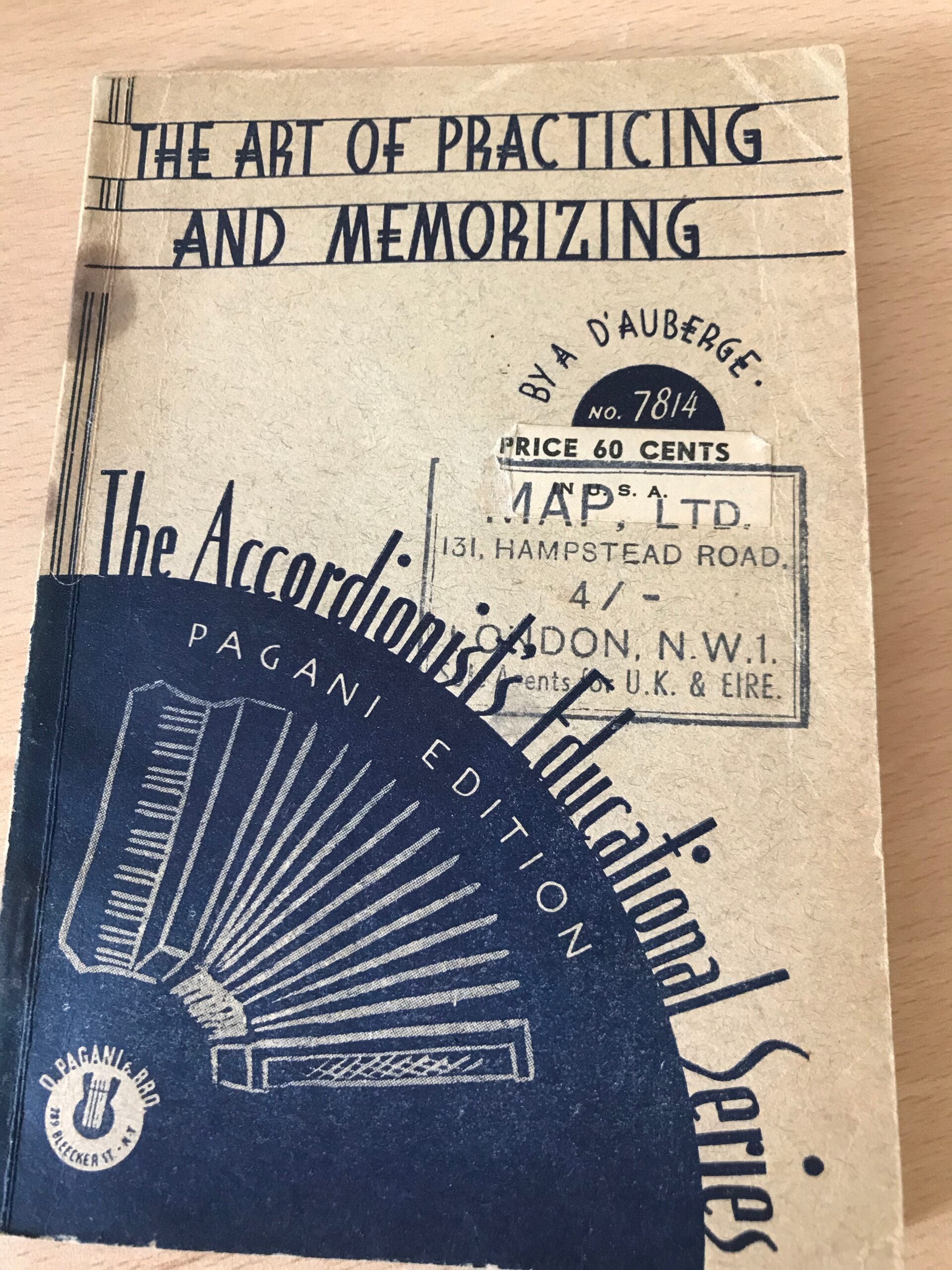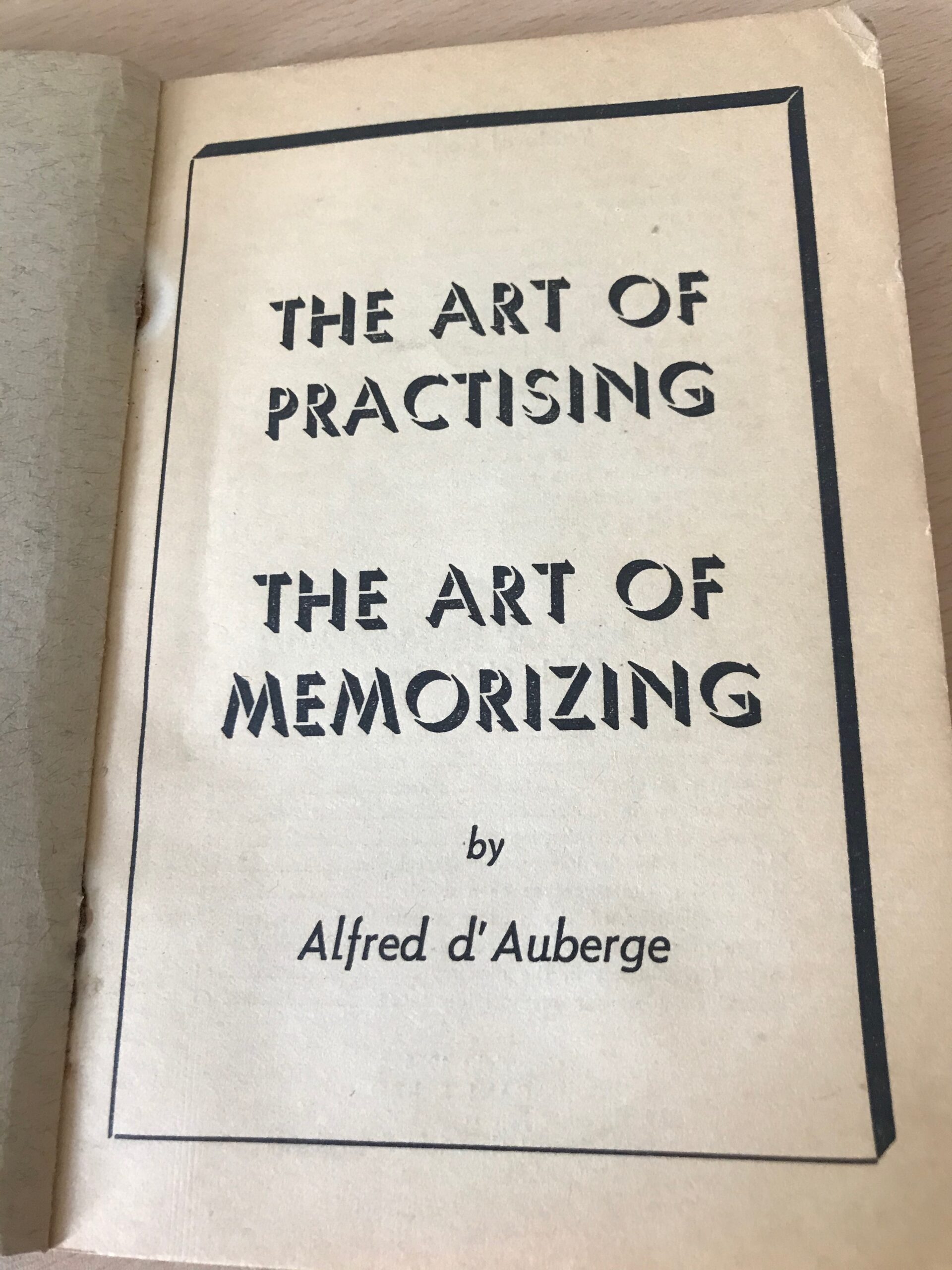
I have been sorting through some of my late Dad’s music stuff and came across this delightful pocket-sized book on improving accordion technique by Alfred d’Auberge. My Dad, Stan Draper, was a professional accordionist and left behind a wealth of music, books and recordings. This booklet also provides a good lesson in spelling ‘practise’ and ‘practice’ correctly.
Published in 1936 in New York at a cost of 50 cents (four shillings in the UK), ‘The Art of Practicing’ and Memorizing’ contains nuggets of wisdom such as:
- practise in the morning while you’re fresh
- develop set times and routines so practice is done without procrastination
- avoid slovenly practice
- for the student aspiring to do professional work, two hours of concentrated study a day is needed. If you’re building a repertoire, another hour a day at least must be added.
If you’re a linguist and editor like me, you’re hard wired into immediately noticing misspellings that really jar. The booklet has the spelling ‘practicing’ on the cover, ‘practising’ on the inside cover and some interchanging use of ‘practise’ and ‘practice’ in the text. This suggests the writing hadn’t been proofread properly. That’s a pity as it’s really quite an interesting read. If you can spell practise and practice correctly, you’re heading to the ranks of editors and proofreaders. 
The Oxford English Dictionary tells us that ‘practice’ is both the verb and the noun in US English. This side of the pond, ‘practise’ is the verb and ‘practice’ is the noun. ‘Notice’ is always with a ‘c’ regardless of whether it’s a noun or a verb, hence: ‘Did you notice the notice?’. It’s no wonder people get confused.
What sometimes happens in publishing projects is that changes are made late on. And even really late, well after they have left the editor’s hands. Sometimes, they’re done over the phone and words are misheard. Occasionally, they’re made by people who mean well but who unintentionally introduce errors. Secretaries and personal assistants have been known to do it, in the mistaken belief that something has been missed and must be corrected.
I once had the job of proofreading 20 or so words on a business card for a Danish shipping company. The company had just had to dump 15,000 business cards after someone noticed a spelling mistake when the cards came back from the printers. They learned from that costly mistake. It was relatively inexpensive to engage a proofreader to check a business card but nobody thought it was necessary for so few words.
Three golden rules
Some golden rules before publishing to avoid embarrassing mistakes:
- establish any terminology and key spellings before you start writing. A book on practising the accordion should have consistent and correct spellings of the words ‘practise’ and ‘practice’, for example. You would reasonably expect a CD of accordion favourites to have the proper spelling of the word ‘accordion’, right? Not always so, as the CD cover alongside shows

CD cover with ‘accordion’ misspelt
- have the book edited after the text is written, to reorganise any paragraphs or clumsy/unclear writing
- commission a proofreader to go through the edited book before going to print. This proofread will fix things like typos and double spaces. It is a process of diminishing returns.
The Chartered Institute of Editing and Proofreading, which I belong to, sums it up nicely when answering the question ‘Why bother?’:
‘A good copyeditor picks up 80% of errors; a good proofreader picks up 80% of what’s left. Why bother? Because people will judge you on the quality of what you put in front of them. Because people will not take you or your message seriously if it is unclear, inconsistent or poorly presented. Because you are asking people to spend time reading it, and it is simple courtesy to smooth the reader’s path.’ That’s why you should spell the words ‘practise’ and ‘practice’ correctly.
Read about our editing and proofreading services.